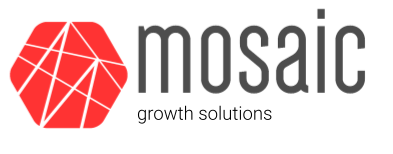Your company just closed an equity deal. You have your work cut-out – developing a strategy to realize new growth goals, addressing critical talent gaps, the list goes on. The first board meeting is a month away. You are focused on demonstrating early progress and momentum.
Fast growth is important, but ensuring you are set up for success is critical to success. The components of a successful growth story are: well-defined strategy + flawless execution + GrowthX factor. The first two are no-brainers, but the last factor needs a bit of explanation.
What is the GrowthX factor?
Simply put, the GrowthX factor (GxF) is a measure of an organization’s readiness for growth and its ability to support scalable, sustainable growth.
Why is GxF important?
Even the strongest product-market fit, most brilliant strategy, and the most talented leadership team won’t be able to overcome the headwinds within an organization that is simply not ready to achieve growth or set up to support it. Before investing too much money, time, and resources in your growth strategy, it is extremely valuable to be set up for success. For companies that don’t address a low GxF, the damage can run much deeper than simply missing growth targets:
- Discord and frustration among the executive team
- Cross-functional friction
- Toxic culture
- Lost resources and time
- Low employee morale
How do I assess my organization’s GxF?
As a leader, ask yourself these 3 questions before investing too much money, time, and resources into your growth strategy.
- Does my organization have a clear growth vision? (Hint: This is more than just a revenue target). Your growth vision should be specific and measurable. It defines what success looks like (goals), how it will be evaluated (KPIs), and how it will be achieved (strategy). The strategy should capitalize on the organization’s biggest opportunities while addressing and defending against its biggest threats. Most importantly, you need to make sure your entire leadership team is aligned around and committed to this vision.
- Is there a clear baseline for performance and a way to track and measure the success of identified strategic initiatives? You can’t scale efficiently without knowing where you are starting from and what is working (and not working) to successfully drive incremental growth. Taking time to build proper attribution and establish a “source of truth” for performance reporting is key to avoiding echo chambers, opinions, and one-off anecdotes to drive critical business decisions. Like the growth vision, all organizational stakeholders should have a unified view of current business performance and commit to leveraging the same set of KPIs, data sources, and reports for decision-making moving forward.
- Have I gotten buy-in to the growth vision at all levels of the organizations? It is imperative that your employees understand the growth vision, believe in the company’s ability to achieve it, and feel a sense of excitement and accountability in the path forward. As part of your message to the organization, you need to address that achieving “next level” growth will require a fundamental shift in organizational culture. Specifically, it will demand greater focus, more urgency, additional risk-taking, and likely a new go-to-market motion (and, of course, you need to be committed to spearheading and supporting this shift in culture).
Can I improve my organization’s GxF?
The good news is that it is easy for an organization to improve GxF, especially if you do it early in the growth process. The key is to surface, acknowledge, and work through any misalignment or lack of clarity around the growth vision at the executive level and take the time to build an understanding, buy-in, and accountability at all levels of the organization. Addressing GxF is so critical to successful growth that Mosaic includes evaluating organizational readiness as part of its initial evaluation of an organization’s marketing-driven growth potential.
It’s hard to resist the urge to hit the ground running. There is no doubt that early wins create invaluable organizational momentum, but ensuring your organization is ready to take growth to the next level is imperative to a sustainable and successful outcome.

Recent Comments